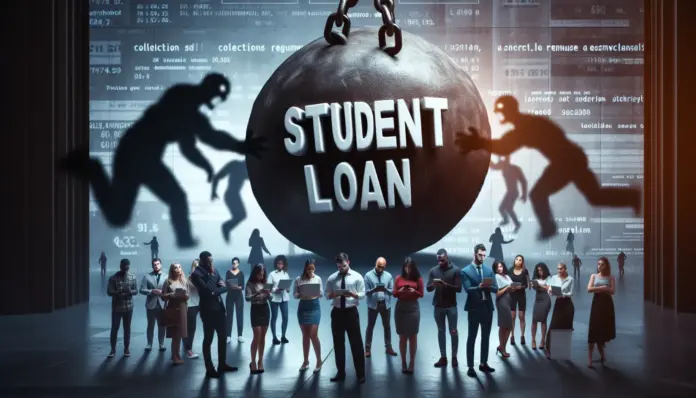The United States is in the state of a financial flashpoint that has not been observed for more than 2 decades – student loans are the primary force that drives national delinquency rates to their highest records in 25 years. Federal student loan repayments were resumed following a pandemic-caused hiatus, precipitating a tsunami of missed payments and suffering on the part of millions of Americans.
The End of Repayment Pause
For about four years, there was a federal freeze on student loan payments by the emergency pandemic relief requests. This freeze, which took place in March 2020, temporarily provided breathing room for borrowers financially. The pause however ended at the end of 2023 followed by a one-year “on-ramp” grace period where the late payments didn’t constrain the borrowers’ credit. That protection expires in October 2024, and from the first quarter of 2025 missed payments will start affecting credit reports all over the country.
The fallout was swift. The latest Quarterly Report on Household Debt and Credit by New York Fed reports the borrower delinquency rate for student loans went up from below 1% to almost 8%. This metric includes borrowers who have at least one delinquent loan 90 days or more, defaulted loans – almost 6 million Americans.
Also read: $2,500 Stimulus Check in May: Real Deal or Social Media Scam?
One in Four With Payments Due Are Behind
Even worse is the “conditional” rate of delinquency, which is based on only the borrowers who had to make payments (without the borrowers in deferment, forbearance or a $0 repayment plan). From this group, a fifth (23.7 per cent) were in arrears by the beginning of 2025. This stark number represents the huge hit of restarting the paying of the financial commitments for the borrowers who had not gotten regular payments for years.
The South has been damaged especially badly. The highest conditional rates of delinquency are reported in the states such as Mississippi (44.6%) and Alabama (34.1%) and Kentucky (33.6%). By comparison, states such as Illinois, Massachusetts, and Vermont have lower than 15%, suggesting the regional differences in financial endurance and educational debt burdens.
Older Borrowers, Higher Delinquencies
A problem regarding student loans is not an issue for young people alone. Data reveal that older debtors, over the age of 40 are becoming more delinquent, compared to the younger ones, below the age of 30. In fact, over 25 percent of borrowers aged 40 and above, who were scheduled to repay could not be able to pay back their loans. This trend discloses the enduring influence of educational debt, which is no longer following people but continues to haunt them even well into the middle period of their life.
Furthermore, the average age of delinquent borrowers has increased to 40. 4, when compared to 38. 6 in 2020, demonstrating the sluggish payment of and long-term nature of student debt.
Also read: Upto $5,108 Social Security Payment On Wednesday, May 14, 2025
A Blow to Credit Health
The effect on credit scores has been devastating. There were 2.4 million newly delinquent borrowers who had credit scores above 620 before becoming delinquent –many of whom would’ve received mortgages, auto loans, or new credit cards. Consequent to the delinquencies, more than 2.2 million had their credit drops by more than 100 points, whereas over 1 million lost 150 points or more. This decline in creditworthiness looms to curtail financial mobility in a significant number of people.
The newly delinquent borrowers are those with already poor credits, i.e. below 620 accounts for more than half of the borrowers. They might not feel the immediate effect of it on access to credit, but the additional burden to already existing financial issues is going to be felt.








